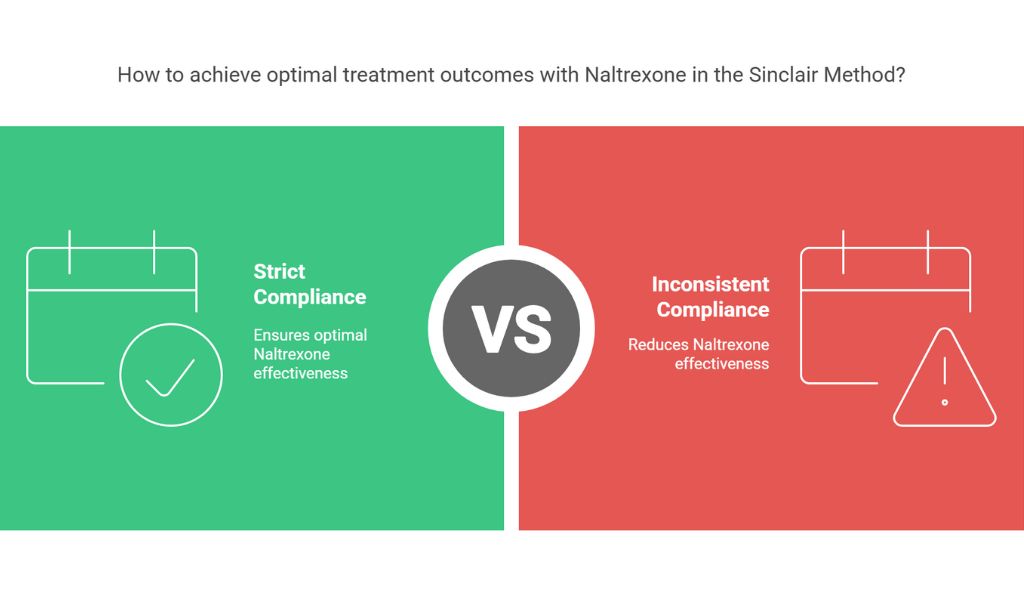The Sinclair Method brings innovative alcohol addiction treatment through an approach that has attracted considerable interest. The Sinclair Method presents a different treatment model than traditional programs because it enables patients to continue consuming alcohol while taking medication to minimize their urges to drink. The Sinclair Method offers successful treatment for Alcohol Use Disorder patients along with flexible options for alcohol recovery.
The Foundation of the Sinclair Method
The Sinclair Method uses scientific pharmacological knowledge about alcohol’s brain responses to establish its approach. Dr. John Sinclair created this reverse application method while working as a Finnish neuroscientist. The brain demonstrates this ability to forget addictive patterns when positive alcohol reinforcement reduces gradually over time.
How the Sinclair Method Works
Patients who use The Sinclair Method take Naltrexone as an opioid antagonist before consuming alcohol one hour before their drink. The brain receptors that produce alcohol-induced euphoria become blocked by Naltrexone throughout its operation. Drug consumption prevents alcohol rewards from functioning, thus discouraging further heavy alcohol use.
This method functions without forcing patients to stop drinking alcohol as one of its essential characteristics. People using the medication are allowed to drink moderately, but the brain associations between alcohol use and pleasure start to weaken through the medication’s action. The reduction of alcohol reinforcement leads to a decrease in craving time and results in people who drink less often and in smaller quantities.
The Sinclair Method provides addiction treatment unique from standard abstinence-based methods because it helps patients reduce their alcohol cravings through a slow reward mechanism depreciation. Such a method lets people actively participate in their recovery by eliminating the pressure to stop using alcohol completely.
The Role of Naltrexone
Naltrexone and the Sinclair method provide Medical professionals found Naltrexone through its initial opioid addiction development program, yet it managed to prove its value in treating alcohol addiction. Through its presence at brain opioid receptors, Naltrexone prevents alcohol euphoria and thus creates a brain reward deficiency.
Patients experience the best outcomes from Naltrexone treatment through daily pre-alcohol consumption. Medication performance decreases when patients fail to take their medicine according to the prescribed dosage schedule. The Sinclair Method requires strict compliance with prescribed medication usage with prolonged commitment to the treatment procedures.
Will the Sinclair Method be suitable for whom?
Active alcohol addicts benefit from The Sinclair Method because it enables them to avoid immediate alcohol cessation. For those who want to regain alcohol control beyond Alcoholics Anonymous’s abstinence requirement, The Sinclair Method gives them an appropriate approach. Naltrexone has a limited impact on certain health conditions and pregnant women because these populations could suffer adverse effects from taking the medication.
Takeaways
The Sinclair Method functions as a verified therapy for alcohol dependence that grants patients more freedom compared to conventional recovery methods. Naltrexone treatment enables alcohol-dependent patients to achieve freedom from addiction gradually while they refrain from complete alcohol avoidance. The Sinclair Method enables multiple patients to achieve beneficial results through its gradual method while continuing their usual day-to-day activities. With the Sinclair Method, patients who have alcohol addiction problems can find an effective medical treatment that provides sustainable alcohol control abilities.





































